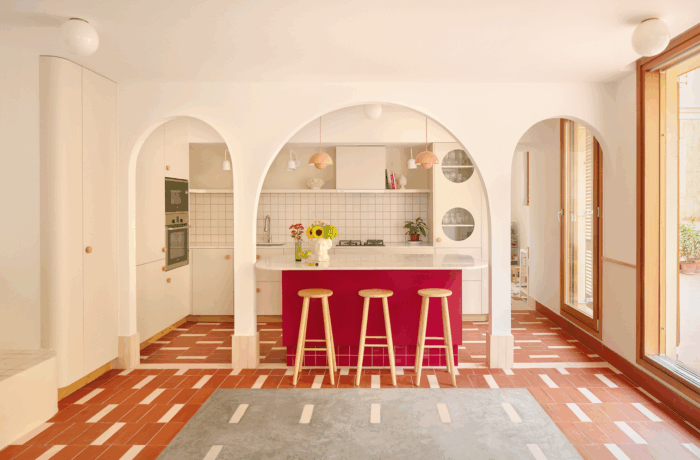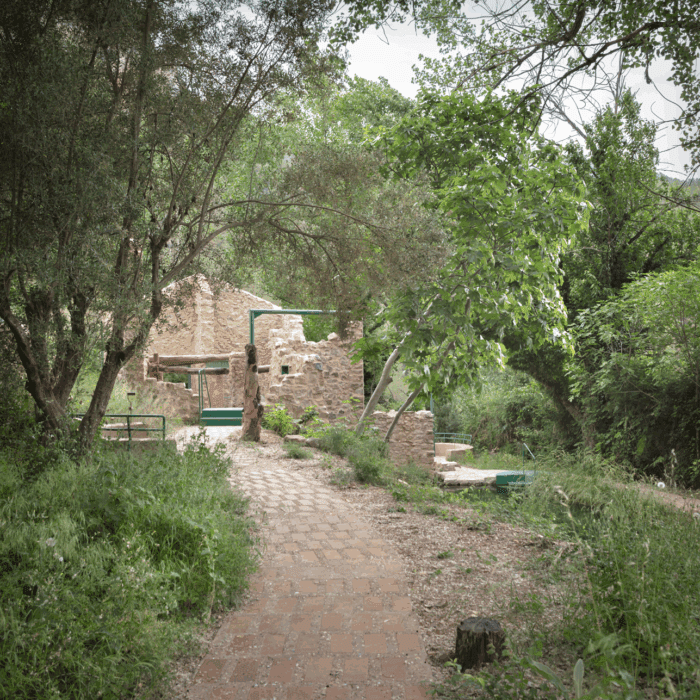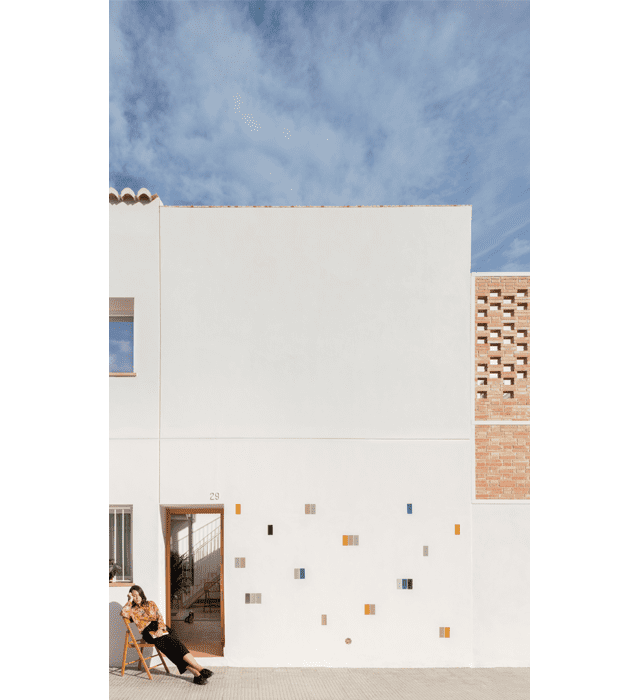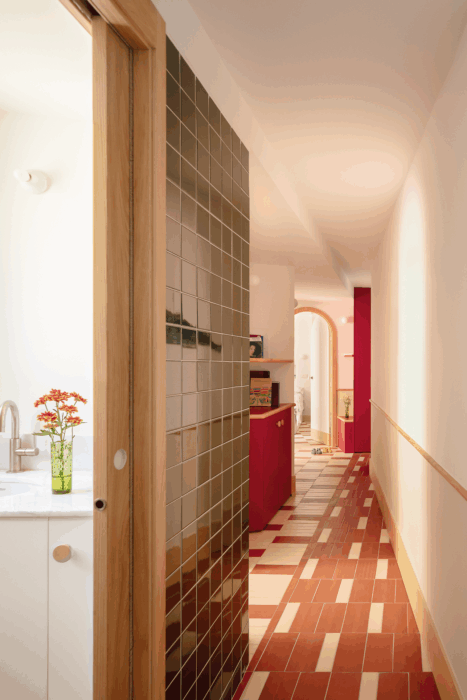The skin we inhabit: the use of ceramics in our projects
- our projects
- /
- tales
- /

The use of ceramics is back — or perhaps it never truly left.
When it comes to dressing our architecture and design projects, we need only look at our neighbors. Tall or short, wide or narrow, yet always wrapped in similar skins. It’s not just tradition — though that too — but an awareness of embracing what surrounds us. In that sense, it’s also a matter of respect.
The use of ceramic materials as a constructive identity
The use of ceramics in our region dates back thousands of years. This, along with the proven durability of the material over time, is a clue worth considering when designing with awareness. In the past, it may have been a necessity, as access to materials from other areas was limited. Yet this constraint — the lack of variety — fostered a sense of self-awareness, perhaps unintentionally, giving rise to a material identity deeply rooted in our territory.
Advocating for the use of ceramic materials is not about nostalgia or a literal return to the past. It is about a new sensitivity that revalues what is local, familiar, recognizable, and functional. To think about architecture is to think about integration.
We see projects emerging that reference the popular or the sustainable from an ironic distance — as if some distant cousin had mentioned it’s a fashionable concept — to defend or justify works made with foreign materials, trendy materials that travel thousands of kilometers just to become part of those constructions.
Uses and applications of ceramic materials at Piano Piano
For Piano Piano, to think about architecture is to think about integration. As conscious architects, we understand the materiality of a project as a way to express our technical and ethical responsibility in the face of the undeniable reality of climate change — to turn our backs, in that sense, on globalization, which allows access to all materials at any cost. That’s why we believe in and are committed to the use of ceramic materials. We also see this reappropriation as an act of coherence within our territory.
After nine years, we can say that the use of ceramics in our projects is our wardrobe staple. Building the Piano Pianos with our wardrobe means understanding that everything else — the shiny things on Instagram, the eccentricities — makes no sense. Even today, many of our clients, when they talk about our projects, refer to ceramic details: “the lattice of the corner house,” “the blush-colored tile in Casa 3en1,” “the glossy bottle-green volume of the Volteta del Carmen,” “how was the tiled path at El camino de la almazara executed?”

All of this makes us realize that the use of ceramic materials in the studio is helping to shape our identity as a brand.
How is ceramics used in each project — and to what purpose?
“La casa del cantó” is a project that looks inward, toward its courtyards — a concept reinforced through the use of the same ceramic flooring with different patterns to create flow — and outward, through a first-floor terrace wrapped in a false façade made of ceramic pieces. It’s a house deeply aware of the privileged environment it sits in — a village in the Valencian huerta where spending hours chatting outdoors is a must. Paying tribute to this Valencian tradition, we created a scenography with splashes of colored ceramics on the façade to foster a warm atmosphere, where neighbors could feel embraced by the color and the human scale of the mural.

In “El desfile de la Puri”, ceramics serve to blur boundaries and reinforce geometries. Faced with an unusual geometry, we responded by redrawing it and dressing the new traces in different ceramic patterns. This allows the inhabitants to perceive and understand the geometry of the house and the reasoning behind many design decisions. Rather than simplifying, this approach illuminates the complexity of the project — a perfect example of an intervention where the first sketches are faithfully materialized.

Like a ceramic museum, “La retícula salpicada” unfolds under a ceramic mantle where the 20×20 tile is the main character, enriched by compatible colors and formats: a clean blue for the kitchen, a calm green for the multipurpose area and bedroom, and a classic terracotta for the bathrooms and the transitional spaces between balconies and interiors. In this project, ceramics act as a guide — suggesting how to inhabit each space and shaping the mood of those who live among these splashes of color.
The conscious use of ceramics as legacy and architectural resource
We can conclude that ceramics are a valuable ally in architecture — not only because they belong to the Mediterranean climate and age beautifully with it, but also because they offer versatility in finishes and formats, and great expressive potential when it comes to evoking sensations: freshness, sobriety, color, darkness, texture.
Fortunately, it is a living heritage that reminds us where we come from — just when we’re most at risk of forgetting — and one we intend to keep using.

